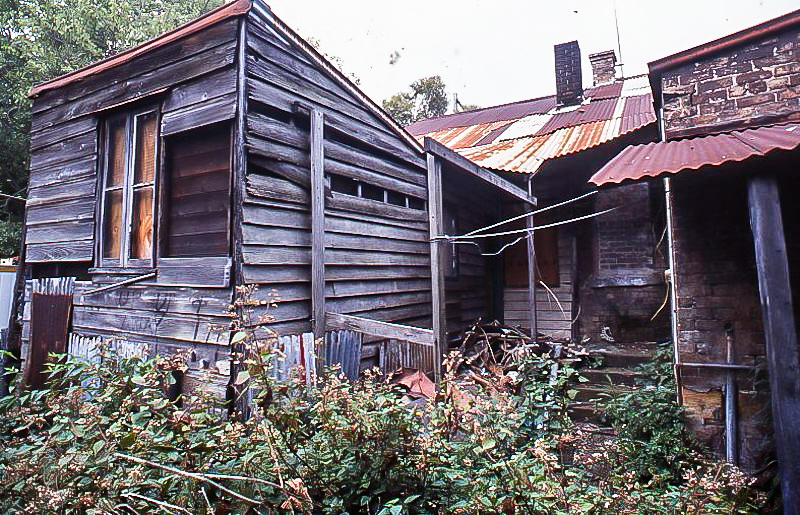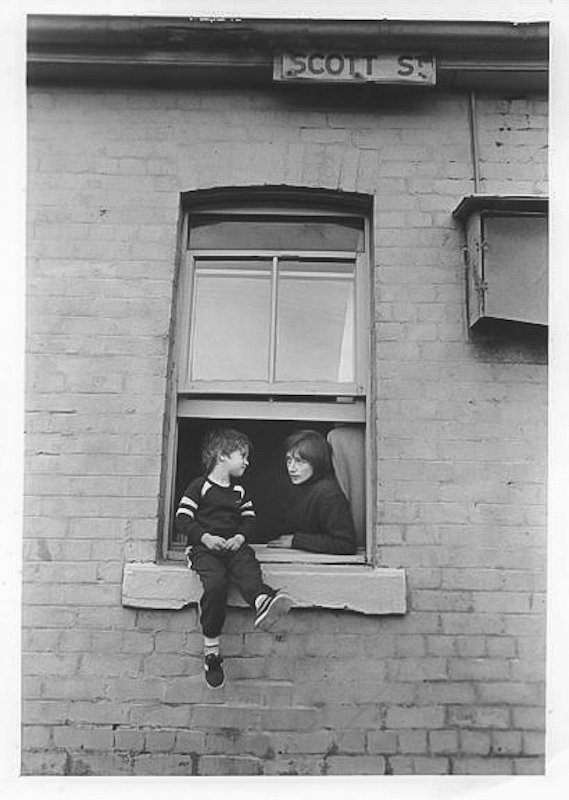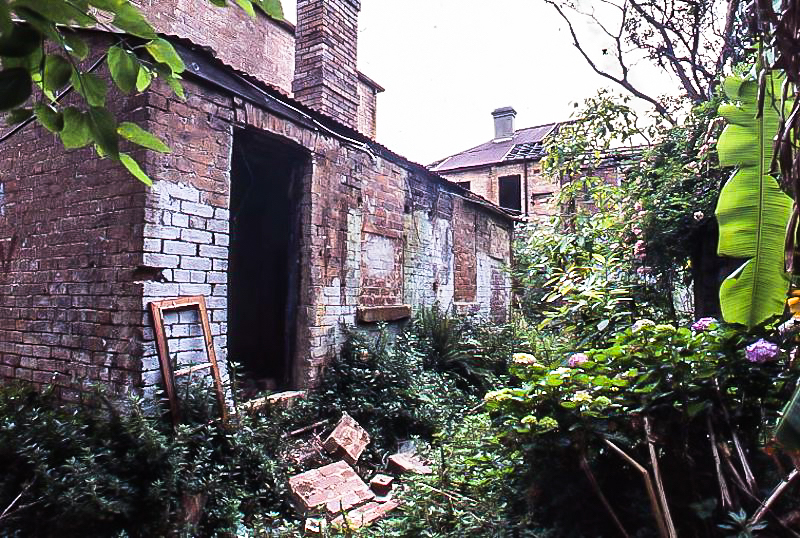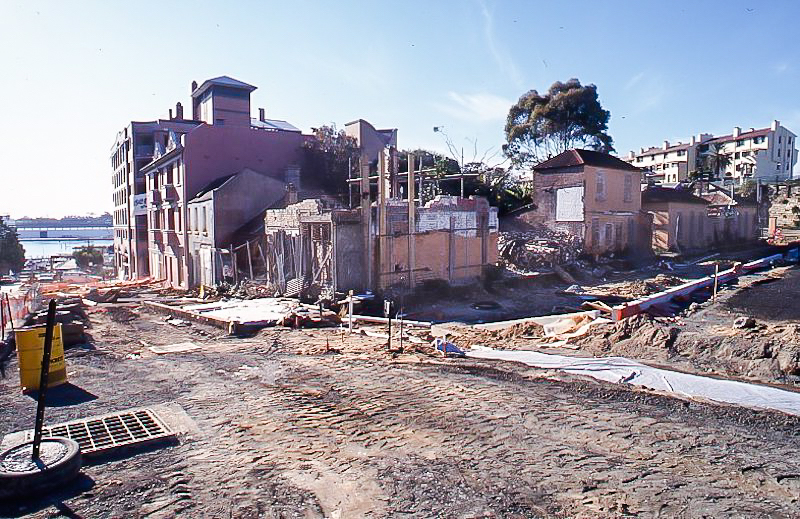Society > Squatting
Squatting
As industries expanded through Pyrmont, housing was resumed and knocked down, which intensified the tensions between landlords and tenants. The decline of industries brought new tensions and actors. Developers planned new buildings and the Department of Main Roads (DMR) bulldozed houses to make way for freeways. But the authorities were no longer dealing only with working class families. Squatting was a new phenomenon. Many squatters were poor but resourceful, some were students, and many had the attitudes and resources of middle class families.
In 1978, taking advantage of a lull in the demolition program, squatters occupied cottages in and around Scott and Cross Streets. They had the skills to repair walls and roofs, tap electricity, rebuild toilets, and repurpose the structures; and they had the flair to redecorate the buildings, create ad hoc bands – Foghorn and Leghorn, Chainsaw Rock – and organise political debates. Toby Zoates made fliers and even films: The Thief of Sydney made its debut at the Old Pyrmont Cottages.
Most important, they manage their own affairs. An excellent account in Wikipedia acknowledges
The ways in which the squatters regulated their own communities, came together for music and other creative ventures, furnished their living spaces, and raised money for court cases with a speak-easy on the corner of Harris and Scott Streets… The squatters were involved in community-based organisations such as the Pyrmont Self-Help Housing Co-operative, and the tongue in cheek Republic of Pyrmont…
In 1983 the University of New South Wales student paper Tharunka reported an alliance of heritage enthusiasts, unionists and squatters. The focus was the cottages in Scott and Cross Streets: 40 squatters denounced “the consumer death trap… We align ourselves with the feminists, gays, and land rights groups and all other organisations which are involved in the struggle. We don’t see ourselves as being just victims…” An editorial praised the squatters for resisting the City Council’s project of gentrification, and their allies – Resident Action Groups, property developers and the Sydney Morning Herald. In these ways the squatters delayed the destruction of old Pyrmont long enough to attract a new wave of urban environmentalists.
Scott St backyard, 1980s
Further Reading
Related Items
Sources
Shirley Fitzgerald in Conservation Management Plan, 1-5 Cross Street and 6-8 Scott Street, Pyrmont, pp100-109




































